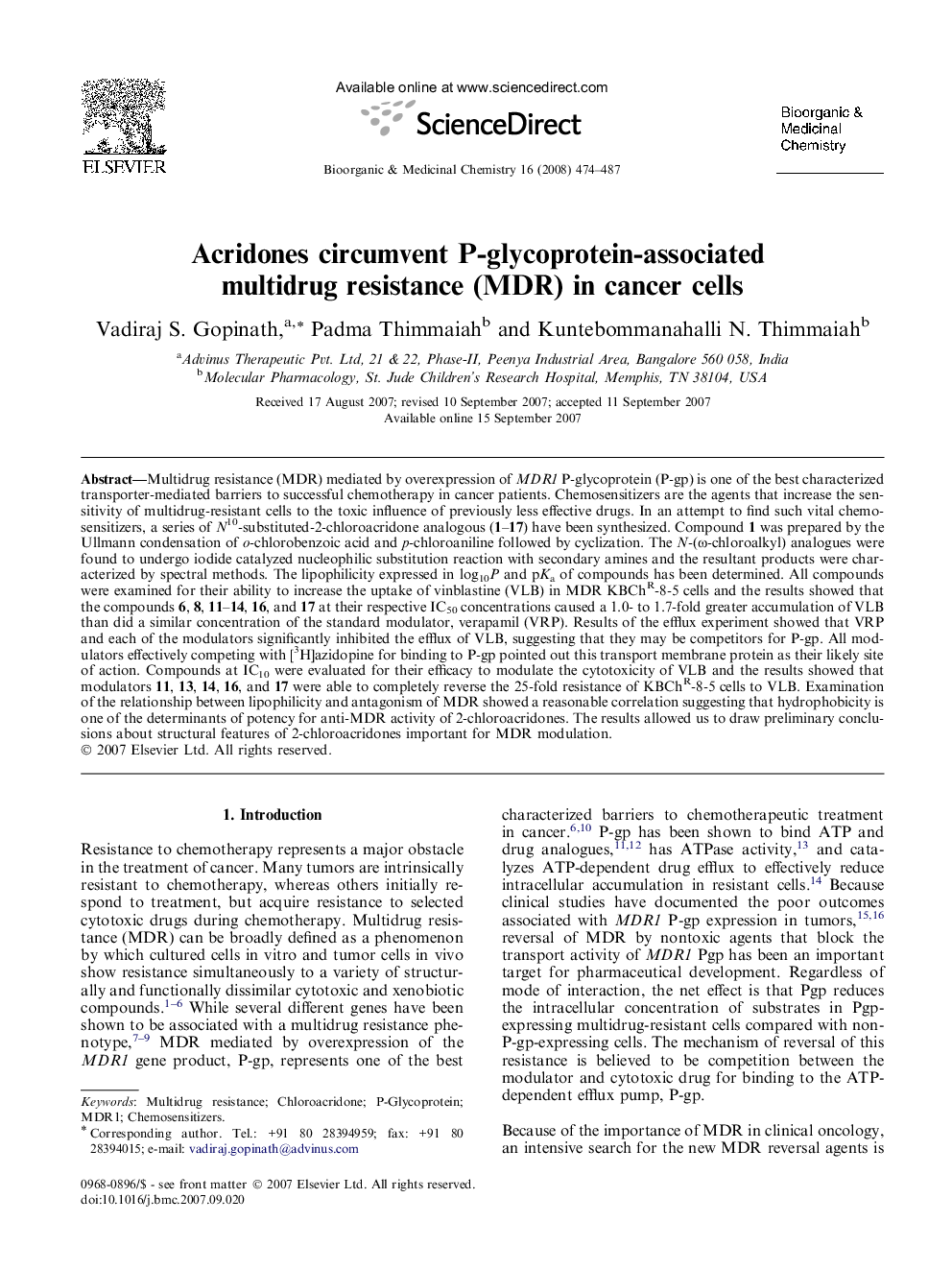| کد مقاله | کد نشریه | سال انتشار | مقاله انگلیسی | نسخه تمام متن |
|---|---|---|---|---|
| 1361814 | 981471 | 2008 | 14 صفحه PDF | دانلود رایگان |

Multidrug resistance (MDR) mediated by overexpression of MDR1 P-glycoprotein (P-gp) is one of the best characterized transporter-mediated barriers to successful chemotherapy in cancer patients. Chemosensitizers are the agents that increase the sensitivity of multidrug-resistant cells to the toxic influence of previously less effective drugs. In an attempt to find such vital chemosensitizers, a series of N10-substituted-2-chloroacridone analogous (1–17) have been synthesized. Compound 1 was prepared by the Ullmann condensation of o-chlorobenzoic acid and p-chloroaniline followed by cyclization. The N-(ω-chloroalkyl) analogues were found to undergo iodide catalyzed nucleophilic substitution reaction with secondary amines and the resultant products were characterized by spectral methods. The lipophilicity expressed in log10P and pKa of compounds has been determined. All compounds were examined for their ability to increase the uptake of vinblastine (VLB) in MDR KBChR-8-5 cells and the results showed that the compounds 6, 8, 11–14, 16, and 17 at their respective IC50 concentrations caused a 1.0- to 1.7-fold greater accumulation of VLB than did a similar concentration of the standard modulator, verapamil (VRP). Results of the efflux experiment showed that VRP and each of the modulators significantly inhibited the efflux of VLB, suggesting that they may be competitors for P-gp. All modulators effectively competing with [3H]azidopine for binding to P-gp pointed out this transport membrane protein as their likely site of action. Compounds at IC10 were evaluated for their efficacy to modulate the cytotoxicity of VLB and the results showed that modulators 11, 13, 14, 16, and 17 were able to completely reverse the 25-fold resistance of KBChR-8-5 cells to VLB. Examination of the relationship between lipophilicity and antagonism of MDR showed a reasonable correlation suggesting that hydrophobicity is one of the determinants of potency for anti-MDR activity of 2-chloroacridones. The results allowed us to draw preliminary conclusions about structural features of 2-chloroacridones important for MDR modulation.
M‘ultidrug resistance (MDR) has become a major obstacle to the clinicians for the treatment of cancer. In an attempt to find clinically useful chemosensitizers, 17 chloroacridones were synthesized and evaluated for anti-MDR activity. Five compounds were able to reverse completely the 25-fold resistance of KBChR-8-5 cells to VLB and therefore, these compounds constitute the promising anti-MDR agents that should be further tested in animal model systems.Figure optionsDownload as PowerPoint slide
Journal: Bioorganic & Medicinal Chemistry - Volume 16, Issue 1, 1 January 2008, Pages 474–487